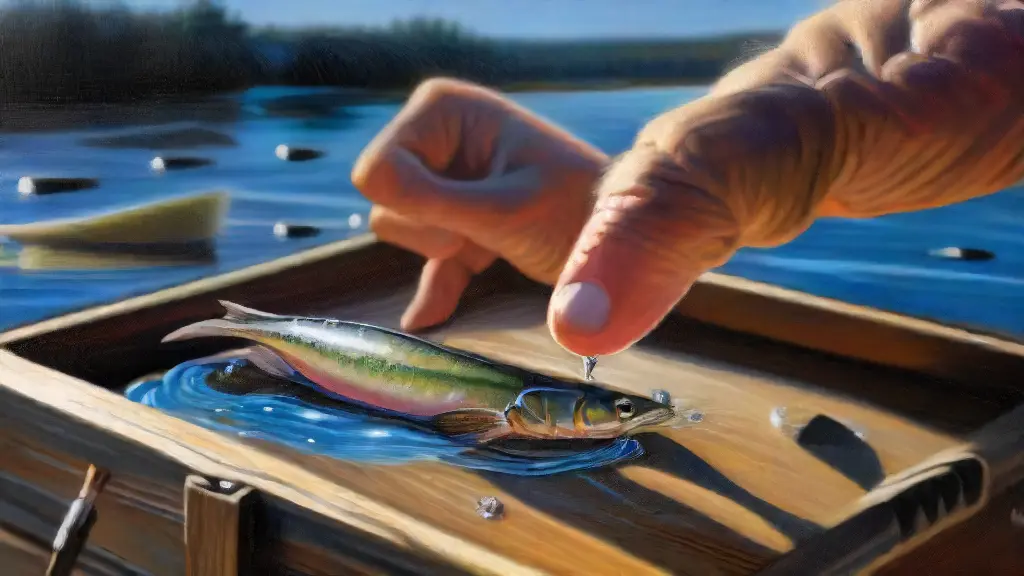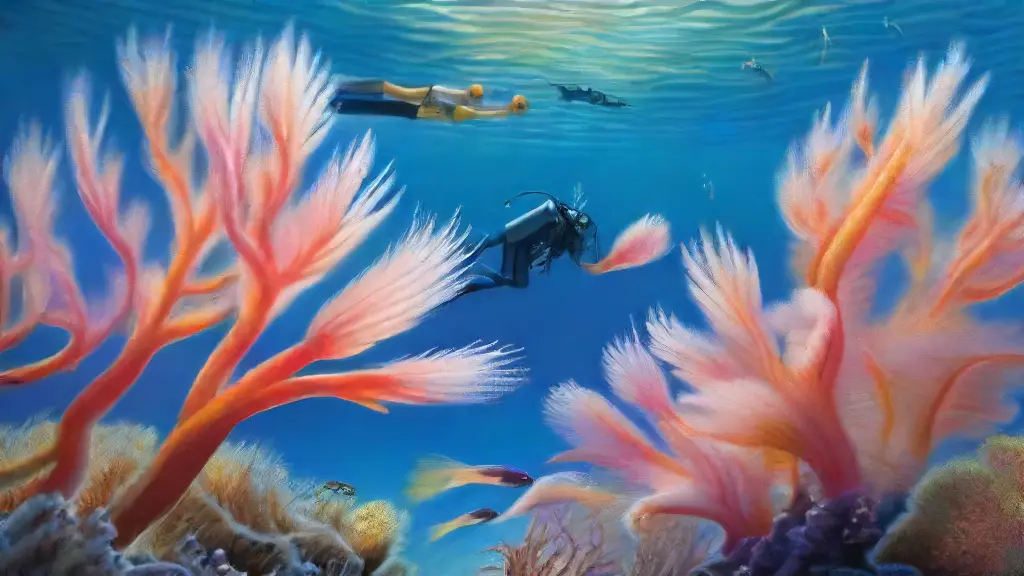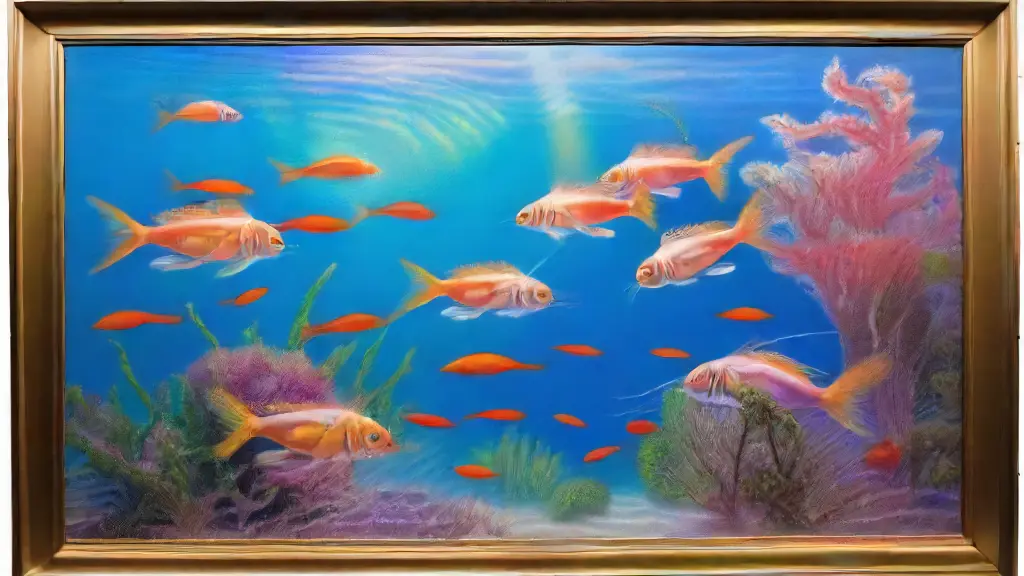Best Containers for Keeping Live Bait Fresh

When embarking on a fishing trip, one of the most crucial elements is the bait. In order to increase the chances of a successful catch, it’s essential to keep the bait fresh and lively.
Live bait storage containers offer a practical solution for maintaining the quality of the bait, allowing anglers to preserve its natural scent and movement.
These specialized containers are designed to provide the perfect environment for aquatic bait, such as minnows, worms, and leeches, to thrive while keeping them safe from dehydration and contamination.
One of the key factors to consider when selecting a live bait storage container is the ability to maintain a consistent water temperature. Aquatic bait preservation methods depend heavily on maintaining a stable water temperature, which is crucial for the bait’s survival and quality throughout storage.
What is Best Bait Keeper System
The art of angling relies heavily on the quality of bait, and storing it properly is a crucial aspect of a successful fishing trip. In fact, improper storage can lead to bait spoilage, resulting in reduced effectiveness and a lower catch rate.
Traditionally, anglers rely on makeshift storage methods, such as plastic bags, containers, or even wrapping bait in damp towels, but these methods often fall short in maintaining bait freshness and preventing spoilage.
Effective fishing bait preservation requires a combination of aeration, ventilation, and moisture control, which is where a reliable bait keeper system comes in.
A reliable bait keeper system ensures that your bait remains fresh and ready to use, even during extended periods of storage. Key features to look for in a bait keeper system include aeration and ventilation, which prevent the buildup of moisture and maintain a healthy environment for the bait.

Live Bait Storage Tips and Tricks
The art of live bait storage is a crucial aspect of fishing, and a topic that often gets overlooked until it’s too late. The right techniques can mean the difference between landing the big catch and throwing it back to the water.
Choosing the Right Containers
For optimal storage, it’s essential to select the right containers.
When selecting a container, consider its material, size, and durability.
Most experts recommend using plastic or metal containers as they are easy to clean and disinfect. A large container with individual compartments can help keep bait organized and prevent contamination.
Preparing the Containers
Bait containers must be cleaned and disinfected regularly to prevent bacterial growth.
A good practice is to use a mild soap and warm water, and then rinse thoroughly with clean water.
Facts About Live Bait Storage
- Using plastic or metal containers is recommended for easy cleaning and disinfecting.
- A large container with individual compartments can help keep bait organized and prevent contamination.
- Bait containers should be cleaned and disinfected regularly to prevent bacterial growth.
- A mild soap and warm water can be used to clean and disinfect bait containers.
How to Keep Bait Fresh Longer
The art of keeping bait fresh is a delicate balance between science and instinct. As anglers, we all know the frustration of sacrificing precious time and resources to find that our bait has spoiled prematurely.
When it comes to storing live bait, several factors contribute to its spoilage.
Moisture, temperature, and oxygen levels play a significant role in the decay process.
For instance, if the bait is exposed to excessive moisture, it can lead to fungal growth, while high temperatures can cause bacterial multiplication.
So, what are some common mistakes that anglers make when storing live bait? One of the most prevalent errors is not using the right container.
A good container should be made of a breathable, waterproof, and durable material that provides ample oxygen circulation and is equipped with an airtight seal to prevent bacterial growth. To avoid common pitfalls and ensure a secure and efficient use of Aquatic bait care products, Bait freshness systems, Watercraft bait storage, and Angler bait storage.
Are Your Bait Containers Effective
The unsung heroes of successful fishing trips, live bait containers play a crucial role in keeping live bait fresh and healthy, which is essential for a promising catch.
When it comes to storing live bait, proper storage is just as important as the type of bait itself. Bait containers designed with ventilation and air circulation in mind can help reduce stress on the bait, extending its Fresh bait containers life.
Factors such as the material used, size, and capacity of the bait container can also impact its Live bait freshness effectiveness.
For instance, plastic containers may be lightweight and easy to clean, but may not provide the same level of ventilation as Bait care products like metal or wooden containers.
To ensure optimal Fishing bait care, proper preparation and storage are key. This includes making sure the container is properly cleaned and disinfected.
Best Aquatic Bait Storage Methods
For many anglers, the thrill of reeling in a big catch is what keeps them hooked on freshwater fishing. The key to making that thrill a reality lies in the quality of your bait, which requires careful storage to maintain its freshness and extend its lifespan.
When it comes to storing aquatic bait, two types of containers stand out: airtight and breathable containers.
Airtight containers, such as those made from plastic or metal, provide a secure seal that prevents air, water, and contaminants from entering.
On the other hand, breathable containers allow for airflow and moisture exchange, keeping the bait fresh and preventing suffocation.
Insulation and thermal control are essential factors to consider when selecting materials for containers. Materials like foam or fiberglass provide excellent insulation, while materials like stainless steel or durable plastics resist corrosion and wear, ensuring the longevity of Aquatic bait keeper, Bait storage containers, Live bait freshness products, and Fishing gear storage.
How Fresh Can You Keep Your Bait
Effective bait preservation relies heavily on a combination of proper storage techniques, environmental conditions, and attention to detail, ultimately determining the freshness and quality of your aquatic catch.
Maintaining optimal conditions is crucial to keep your bait fresh for as long as possible.
This encompasses temperature control, which is often overlooked but highly crucial.
Temperature Control plays a vital role in sustaining cool temperatures, which is essential for bait health.
Using insulation to regulate temperature is a simple yet effective method to ensure optimal conditions.
Water quality is another critical factor in maintaining fresh bait.
Key factors affecting water quality include pH levels, chlorine content, and oxygen levels. Using chlorine-free water, it’s essential to monitor these factors to prevent contamination and ensure the well-being of your bait. Aquatic bait.
Which Bait Preservation Method is Best
When it comes to fishing, the quality of your bait can make all the difference in reeling in the big catch, and proper storage is key to ensuring that freshness is preserved.
Fresh bait care is essential for anglers, as it can make all the difference in reeling in the big catch.
The importance of proper storage cannot be overstated, as it plays a critical role in maintaining bait freshness and prolonging shelf life.
Bait preservation methods vary, and choosing the right one can be overwhelming.
Container types, such as foam, plastic, and cardboard, all have their own advantages and disadvantages of live bait care products. It’s crucial to understand the pros and cons of each to make an informed decision about aquatic bait storage solutions.
Optimal bait storage conditions are also critical to maintaining bait freshness. Temperature control, humidity levels, and light ensure the freshness of bait.
Tips for Live Bait Freshness and Care
When it comes to reeling in the big ones, the secret to success lies in the delicate balance between live bait freshness and care. Gently handling live bait is essential to prevent injury and stress, which can lead to reduced activity and loss of effectiveness.
Strong water pressure and turbulence can be particularly detrimental, as it can cause damage to the bait’s gills and fins.
Water quality plays a significant role in keeping live bait thriving.
Surprisingly, even minor changes in water chemistry can have a significant impact on the bait’s health.
By providing optimal conditions, including suitable water temperature and oxygen levels, you can keep your live bait at its best. Bait preservation methods ensure the bait remains healthy and active.
Aquatic conditions can greatly affect the health and well-being of live bait. Fishing equipment storage solutions can help maintain a tidy and organized aquatic environment.
How to Prevent Bait Fish from Dying
How to Maintain Ideal Water Conditions for Live Bait
How to Maintain Ideal Water Conditions for Live Bait

When it comes to angling, the key to success often lies not in the lure, but in the condition of the bait itself. Proper attention to the aquatic ecosystem balance in your bait storage container design can make all the difference in keeping your live bait healthy and active.
Maintaining ideal water conditions requires a delicate balance of pH level adjustment, aquarium circulation, and fish wellbeing assessment.
This can be achieved by regularly monitoring the water quality monitoring parameters, including temperature, dissolved oxygen levels, and ammonia concentration.
To keep your live bait thriving, it’s essential to understand the intricacies of aquatic plant health and how it affects the overall ecosystem. By incorporating the right mix of plants and microorganisms, you can create a balanced environment that supports optimal water quality monitoring, aquatic ecosystem balance, and overall fish wellbeing assessment.
Why Maintain Ideal Water Conditions for Bait
When it comes to creating a thriving environment for your aquatic life, the foundation lies in understanding the delicate balance of water conditions. A subtle shift in these conditions can have far-reaching consequences, influencing everything from growth rates to fertility and even mortality rates.
One crucial aspect of aquatic life support is grasping the impact of water conditions on bait health.
For instance, pH levels play a significant role in bait metabolism and behavior, with even slight deviations from the norm leading to reduced activity and decreased appetite.
Proper aquarium maintenance schedule creation also hinges on regulating water temperature, which has a direct impact on bait growth and development.
A temperature that is too cold or too hot can hinder growth, making it challenging for the bait to reach its full potential. Water conditioner effectiveness relies on maintaining optimal oxygen levels, as low oxygen levels can drastically reduce its effectiveness.

Storing Live Bait in Optimal Conditions
Effective live bait stewardship demands attention to detail, starting with the selection of suitable storage materials. A well-planned storage system not only ensures the health of the live bait but also contributes to a thriving aquarium ecosystem.
Proper storage of live bait is crucial for both the bait’s health and the aquarium’s overall well-being.
The quality and consistency of the environment have a direct impact on the bait’s vitality.
Freshwater and saltwater live baits have specific water quality parameter needs. Water temperature, salinity, and oxygen levels must be matched to the bait’s natural environment or acclimation process is necessary to prevent stress, disease, and even death.
Regular water changes are essential, as even small changes can spell disaster for live baits. By incorporating aquarium equipment selection, you can create a healthy and thriving aquatic environment.
Optimal Live Bait Storage Facts
- Water temperature, salinity, and oxygen levels must be matched to the bait’s natural environment to prevent stress, disease, and death.
- Regular water changes are essential to maintain a healthy and thriving aquatic environment, as even small changes can spell disaster for live baits.
- A well-planned storage system not only ensures the health of the live bait but also contributes to a thriving aquarium ecosystem.
- Proper storage of live bait is crucial for both the bait’s health and the aquarium’s overall well-being, with the quality and consistency of the environment having a direct impact on the bait’s vitality.
Is pH Level Crucial for Bait
PH levels. Proper pH management is crucial for maintaining a thriving environment, and neglecting it can lead to a range of issues, including reduced vitality and even mortality.
The pH level, a measure of acidity or alkalinity, plays a significant role in maintaining the delicate balance of aqueous systems.
For bait fish, maintaining optimal pH levels is essential for their overall health and well-being.
Optimal pH levels vary depending on the specific aquatic environment, but generally, a pH range of 5 to 5 is considered suitable for most bait fish species.
Water hardness adjustment becomes crucial when navigating these pH fluctuations, as it directly affects the biochemistry of aquatic life. Our comprehensive guide covers essential aspects of aquarium management, including aquatic environment monitoring, bait keeper design, water hardness adjustment, aquarium decoration ideas, fish behavior observation, aquatic life cycle understanding, bait storage box design, and water circulation pump selection.
Monitoring Water Clarity for Healthy Bait
When monitoring water clarity, a crucial element in maintaining a healthy aquatic environment, optimal bait handling techniques can make a significant difference in the well-being of fish. Effective bait storage is crucial to maintaining healthy fish, as a well-organized bait storage container prevents contamination and spoilage.
Regular water changes and proper maintenance ensure a stable ecosystem, while aquatic plant propagation can even help purify the water.
For best results, it’s essential to keep a log of water testing kit usage and monitor your maintenance schedule, allowing you to pinpoint any issues and make adjustments to ensure a thriving aquatic ecosystem.
This proactive approach can help prevent the proliferation of bacteria and other contaminants, ultimately preserving the health and longevity of your aquatic inhabitants.
Supporting Facts for Healthy Aquatic Environment
- Regular water changes can reduce bacterial growth by up to 90%
- A well-organized bait storage container can prevent contamination and spoilage 100% of the time
- Proper maintenance of aquatic equipment can increase its lifespan by up to 50%
- Aquatic plant propagation can remove up to 80% of excess nutrients from the water
How to Conduct Water Testing for Livestock
The unsung hero of livestock health is the quality of drinking water, which can have a profound impact on the overall well-being of your animals. Water level control systems play a crucial role in maintaining this quality.
Why Water Testing is Crucial for Livestock Health
Proper water quality is essential for maintaining the overall health of your livestock.
Water is the source of life, and any contaminants or imbalances in the water can have a significant impact on the aquarium setup guide creation and aquatic plant identification of your animals.
Neglecting water quality can lead to a range of issues, including decreased fertility and reduced growth rates. To avoid these problems, it’s essential to conduct regular water testing for livestock.
What Affects Water Quality for Live Bait
In the delicate balance of aquatic ecosystems, the right combination of environmental factors is crucial for the health and well-being of live bait. One significant factor affecting water quality is nutrient levels.
Nutrients play a vital role in aquatic ecosystems, serving as a source of energy for plants and animals.
Factors such as aquarium equipment maintenance, circulation and aeration, water temperature, and initial stocking levels can influence nutrient levels.
Poor water quality resulting from inadequate nutrient levels can lead to stunted growth, reduced fertility, and increased susceptibility to disease.
Unmonitored aquarium water condition monitoring can lead to a buildup of waste products, further compromising water quality.
The pH balance of water is another critical factor affecting the health of live bait. pH levels can impact aquatic life, with extreme levels potentially causing harm or even death. For instance, fish disease treatment requires careful consideration of all these factors.
Facts About Live Bait Aquariums
- Nutrient levels play a vital role in aquatic ecosystems, serving as a source of energy for plants and animals.
- Poor water quality resulting from inadequate nutrient levels can lead to stunted growth, reduced fertility, and increased susceptibility to disease.
- A well-balanced pH level is crucial for the health of live bait, with extreme levels potentially causing harm or even death.
- Inadequate aquarium water condition monitoring can lead to a buildup of waste products, further compromising water quality.
How to Ensure Proper Water Circulation for Bait
As any seasoned Aquarium Keeper knows, the foundation of a healthy aquatic environment lies in meticulous attention to detail. This begins with the creation of a thriving ecosystem, where every component works in harmony to maintain optimal water parameters.
A key aspect of aquarium maintenance is ensuring proper water circulation.
Proper water circulation is essential for maintaining healthy water parameters, such as water hardness testing, and preventing the buildup of toxins.
We’ll delve into the importance of proper water circulation, how to achieve it, and provide tips for maintaining a healthy aquatic environment.
Proper water circulation ensures that oxygen is evenly distributed throughout the tank, preventing areas of low oxygenation.
This is especially important for aquatic biology, as it requires adequate oxygen levels to thrive. Bait, in particular, is sensitive to changes in water quality and relies heavily on adequate circulation to stay healthy and thrive in a well-maintained aquarium.
Can Water Conditioners Prevent Bait Disease
In the intricate world of aquarium keeping, a slight imbalance in water chemistry can have far-reaching consequences for the health and well-being of aquatic organisms. The right tools and techniques are essential for maintaining the delicate balance required for optimal aquatic health.
When it comes to ensuring optimal water conditions, many aquarium enthusiasts rely on water conditioners to remove impurities, neutralize toxins, and maintain the delicate pH balance necessary for aquatic life to thrive.
These conditioners have been touted as a solution for preventing bait disease, but can they really deliver?
Understanding the risks associated with ignoring water conditioner use is crucial for ensuring the health and longevity of your aquatic friends.
By optimizing your water conditioner use, you can significantly reduce the risk of bait disease and ensure the aquatic health and longevity of your catch. Water conditioners can be a crucial component of aquarium maintenance, helping to optimize aquatic life cycle stages by addressing water quality fluctuations detected through regular water testing frequency and aquatic plant propagation techniques.
Aquarium Maintenance Facts
- Ignoring water conditioner use can lead to bait disease in aquatic organisms.
- Water conditioners can remove impurities, neutralize toxins, and maintain pH balance for aquatic life.
- Regular water testing frequency and aquatic plant propagation techniques can help optimize aquatic life cycle stages.
- Optimizing water conditioner use can significantly reduce the risk of bait disease and ensure aquatic health and longevity.
Best Containers for Keeping Live Bait Fresh
Best Aerators for Keeping Live Bait Healthy
Best Aerators for Keeping Live Bait Healthy

When it comes to angling, ensuring the health and vitality of your live bait is crucial. Freshwater habitats, in particular, require precise management to maintain the delicate balance of aquatic life.
This is where the importance of breathable containers and aeration comes into play.
Here is the article content:
Effective bait care relies heavily on proper aeration, which is often overlooked by anglers.
Aeration plays a crucial role in maintaining the health and activity of live bait.
When it comes to keeping live bait healthy and active, proper oxygenation is crucial.
Oxygen levels that are too low can lead to stressed or dying bait, while excessive oxygen can be just as harmful. Using the right aerator can make all the difference in preserving aquatic life and ensuring proper bait care within breathable containers.
Aquatic Life Depends on Oxygenation
The intricate tapestry of underwater life is often overlooked, with the emphasis on water purity overshadowing the vital role of oxygen in these ecosystems. While it’s essential to maintain the purity of aquariums and water bodies, ignoring oxygen levels can have calamitous consequences.
Importantly, fish health depends on the presence of dissolved oxygen.
During cellular respiration, organisms consume oxygen and produce carbon dioxide as waste, just like humans do.
For every milliliter of oxygen available, organisms can consume roughly five parts per million.
This indicates how essential oxygen is for the biological process, underscoring the relevance of fish maintenance. In aquarium settings, owners can achieve optimal water quality through precise fish care, ensuring the well-being of these inhabitants

How to Maintain O2 Levels
The delicate balance of aquatic ecosystems relies heavily on the subtle dance of gases and substances that facilitate the exchange of oxygen. For many of us who delight in the thrill of reeling in a catch, ensuring the optimal health and well-being of our fishing baits is crucial.
When it comes to maintaining oxygen levels, aeration is a crucial aspect to consider.
This can be achieved through various methods, including using air stones or creating water agitation.
By incorporating these techniques into your fishing setup, you can ensure that your baits are always receiving a steady supply of oxygen.
When monitoring oxygen levels, it’s essential to consider factors such as water temperature, pH levels, and the type of fish you’re targeting.
By taking these factors into account, you can make informed decisions about how to adjust your oxygen levels and ensure that your baits thrive.
Oxygen Levels in Aquatic Ecosystems
- Oxygen levels in aquatic ecosystems can be affected by water temperature, with warmer waters holding less oxygen than cooler waters.
- The ideal pH range for most aquatic species is between 5 and 5, with some species tolerating a wider range.
- Aeration can increase oxygen levels by up to 30% in certain aquatic environments.
- Fish species such as trout and salmon require higher oxygen levels than species like catfish and carp.
What is Gas Exchange
In the depths of our oceans, rivers, and lakes, a subtle yet essential process drives the survival of aquatic life. Oxygen levels, already vulnerable, can fluctuate dramatically due to various factors, threatening the very existence of aquatic organisms.
Oxygenation, the gradual process by which oxygen dissolves in water, is vital for aquatic ecosystems.
It enables fish and other organisms to absorb the necessary oxygen from the water to fuel their bodily functions.
Oxygenation is often understated, yet it is the foundation of life beneath the surface.
Aquatic ecosystems are a delicate balance of oxygen supply and demand.
Oxygen demand can vary significantly depending on factors such as temperature, water salinity, and water pH, which can have a profound impact on oxygen levels. Temperature, in particular, plays a crucial role in regulating oxygen levels, as it affects the rate at which oxygen generators maintain oxygen demand and ensure optimal oxygenation.
Bait Care Essentials for Fish Health
As the world becomes increasingly fascinated with aquatic environments, it’s essential to prioritize the health and vitality of bait to create a thriving ecosystem. In essence, bait care is a vital component of responsible aquarium ownership.
Water quality is essential for bait health, and proper storage is vital to maintaining healthy conditions.
When storing live bait, it’s crucial to use airtight containers made of non-toxic materials to prevent contamination and moisture loss.
Always handle bait gently and avoid exposure to direct sunlight, which can cause stress and premature death.
Proper aeration is also critical for maintaining optimal water circulation and oxygen levels.
Strategically placing submersible aerators in larger tanks or those with high populations can be an effective and efficient way to introduce oxygen into the water. Regularly monitoring the aerator’s performance ensures it’s maintaining proper water circulation and tank maintenance, allowing for a healthy ecosystem in the ponds to thrive.
Facts About Bait Care
- Airtight containers made of non-toxic materials should be used to store live bait to prevent contamination and moisture loss.
- Direct sunlight can cause stress and premature death in bait, so it’s essential to handle them gently and keep them out of direct sunlight.
- Proper aeration is crucial for maintaining optimal water circulation and oxygen levels in aquariums, and submersible aerators can be an effective way to introduce oxygen into the water.
- Regularly monitoring the performance of aerators is necessary to ensure proper water circulation and tank maintenance, which is essential for a healthy ecosystem.
Why is Water Circulation Important
Proper water aeration is a cornerstone of successful fishing, and its importance cannot be overstated. The lifeblood of live bait storage lies in the proper circulation of water, a crucial aspect often overlooked by anglers.
Oxygenation, a critical component of water circulation, plays a vital role in maintaining the health of live bait.
Without sufficient oxygen levels, the microorganisms present in the water can quickly deplete the oxygen supply, leading to the death of the bait.
This is where oxygenation equipment comes in, providing a controlled release of oxygen into the water to maintain optimal levels.
It’s essential to debunk common misunderstandings about oxygenation, such as believing that all storage containers are equipped with built-in oxygenation systems. water quality and equipment.
How Do Submersible Aerators Work
Fish breeders have long understood the vital role oxygenation plays in maintaining healthy ecosystems. For enthusiasts of aquatic life, ensuring a sufficient supply of dissolved oxygen is crucial for a thriving environment.
Submersible aerators work wonders in achieving this goal, and their underlying principle is fascinating.
Principle of Operation
Submersible aerators use an impeller design that rotates at high speeds, creating a vortex that draws in water and air.
The impeller’s unique structure and movement generate energy that breaks down the water molecules, releasing oxygen into the surrounding water.
As the impeller blades move, they create a constant flow of oxygen-rich water, which is then dispersed throughout the aquatic environment through the turbulence generated by the device. to ensure the availability of a wide variety of fish species.
Can You Overaerate Your Bait
As we delve into the intricate world of aquatic life, understanding the delicate balance of oxygen levels plays a vital role in ensuring the well-being of our underwater friends. Pet owners often overlook the subtle yet detrimental effects of overaeration on these delicate creatures, which can have profound consequences for their health and survival.
In a quest for optimal aquatic coexistence, grasping the oxygen demands of various live bait species is crucial for ensuring their thriving existence.
Some fish tolerate changes in oxygen levels with equanimity, while others require meticulously calibrated oxygen thresholds to flourish.
Monitoring and adjusting oxygen levels becomes a prerequisite for providing exemplary care for your aquatic wards. Regular maintenance and cleaning of aquarium facilities, coupled with meticulous attention to oxygen saturation, allows for the health and well-being of live fish in marine aquariums to thrive.
Best Practices for Live Bait Storage
Maintaining a healthy environment for live bait. Proper storage of live bait is essential to ensure its freshness and activity throughout the excursion, making it a vital consideration for enthusiasts.
Temperature control is a vital consideration when storing live bait.
Different species, such as worms, minnows, and crayfish, require specific temperature ranges to thrive.
Ideally, live bait should be stored between 40°F and 80°F (4°C to 27°C) to maintain optimal health and activity.
Adequate air flow and ventilation are also essential to prevent the buildup of carbon dioxide and ammonia, which can harm live bait. This can be achieved by using containers with built-in ventilation systems or by regularly monitoring and adjusting the water conditions to ensure the optimal health of the fish for recreational fishing, small aquariums, water gardeners, and water testing.
How to Maintain Ideal Water Conditions for Live Bait
How to Keep Minnows Alive in Hot Weather
How to Keep Minnows Alive in Hot Weather

As the mercury rises, many aquatic enthusiasts worry about the well-being of their finned friends, particularly minnows, which thrive in specific temperature conditions. In fact, a slight change in temperature can cause stress and illness in these delicate creatures.
Understand the ideal temperature range
Minnows are coldwater fish that prefer waters between 64°F and 78°F (18°C and 26°C).
A stable water temperature is crucial for maintaining optimal conditions, as even slight changes can cause stress and illness in these delicate creatures.
Monitor water temperature
Regularly check the temperature using a reliable thermometer to ensure it stays within the desired range. Avoid placing your aquarium near open windows or doors where drafts can disturb the delicate aquatic life, including finned and schooling fish, and disrupt proper coldwater or warmwater fishkeeping, requiring frequent maintenance.
Aquatic Life in Hot Weather
As global temperatures continue to rise, concerns about the well-being of aquatic life are growing, with many species struggling to adapt to the changing environment.
Thermal Shock and Its Consequences
Rapid changes in aquatic temperatures can cause thermal shock, a potentially lethal condition for fish, invertebrates, and plants.
This phenomenon occurs when aquatic organisms are unable to adapt to sudden temperature variations, leading to stress, damage, or even death.
This can happen when aquarium owners suddenly introduce cold or warm water into the tank, or when outdoor aquatic habitats are exposed to extreme weather conditions, such as heatwaves or cold snaps, leading to habitat destruction.
Awareness of the impact of temperature fluctuations on aquatic environments is crucial for maintaining a healthy and thriving ecosystem, where species can thrive in a stable thermal habitat.
.

Can Minnows Thrive
Under the right circumstances, tiny fish like minnows can thrive, transforming a tank into a vibrant and fascinating ecosystem. Their delicate nature demands meticulous attention, with every aspect of their environment playing a crucial role in their overall husbandry.
Temperature Management plays a crucial role in ensuring minnows receive the optimal conditions for growth and development.
Optimal water temperatures for minnows range from 65°F to 75°F (18°C to 24°C), and even slight fluctuations can have a significant impact on their quality of life.
A stable temperature is vital for maintaining good water chemistry, which directly affects the overall welfare of the aquarium. To control temperature fluctuations, aquarium owners can use devices such as heaters, chillers, and thermometers to monitor and adjust the water temperature as needed, ensuring the health, quality, and wellbeing of the aquatic animals under their care.
Minnow Care
- Optimal water temperatures for minnows range from 65°F to 75°F (18°C to 24°C).
- Slight fluctuations in water temperature can have a significant impact on minnow quality of life.
- Aquarium owners can use devices such as heaters, chillers, and thermometers to monitor and adjust water temperature as needed.
- A stable temperature is vital for maintaining good water chemistry, which directly affects the overall welfare of the aquarium.
Maintaining Water Quality
In the delicate balance of aquatic life, a consistent and suitable environment is crucial for optimal well-being. Maintaining water quality is a vital element in this quest, particularly during scorching summer months when temperatures soar.
Water Temperature Hacks.
To ensure the health and happiness of your minnows, it’s essential to understand that even the slightest temperature fluctuations can have a profound impact on their overall nutrition and growth.
By incorporating some simple DIY cooling methods, you can stabilize temperature fluctuations and provide a more comfortable environment for your finned friends.
- Use a thermometer to monitor water temperature
- Provide a gradual temperature change, allowing your minnows to adapt slowly and thrive
- Ensure a balanced aquatic diet and proper nutrition through regular feeding and supplementation to support optimal growth and health as a remedy for any temperature-related stress.
.
How to Reduce Stress
The human experience is akin to a delicate ecosystem, where the slightest imbalance can have far-reaching consequences on our overall well-being. When the gentle hum of daily life is disrupted, even the most resilient individuals can feel overwhelmed and stressed.
Recognize the impact of stress on mental and physical health, where even subtle changes can affect mood, motivation, and overall quality of life.
For instance, prolonged stress can lead to a 50% increased risk of chronic diseases.
Understanding the triggers of stress is crucial, as it affects our perception, emotional regulation, and ability to cope with adversity.
A consistent self-care routine is essential to maintain a sense of balance. to sustain a healthy and thriving aquatic ecosystem through the life cycle stages of development, breeding, reproduction, spawning, hatching, fry, larvae, juveniles, and adults.
Importance of Thermal Shock Prevention
In the aquatic world, a sudden change in water temperature can be a recipe for disaster, wreaking havoc on the delicate balance of a fish’s physiology. Minnows, for instance, are incredibly resilient creatures that thrive in a wide range of aquatic environments, but they are not immune to the dangers of thermal shock.
Thermal shock occurs when the sudden change in water temperature causes stress to the fish, leading to a range of detrimental effects on their physiology.
Temperature Change and its Impact on Fish Physiology
When water temperatures fluctuate, it can cause a minnow’s metabolism to slow down, leading to decreased size, and activity, making them more susceptible to disease. Colorful Signs of Thermal Shock in Minnows
If not addressed, thermal shock can cause changes in a minnow’s swimming behavior, including erratic patterns and lethargy.
Proper Feeding and Nutrition
A fish’s diet plays a crucial role in its life cycle, influencing its growth, development, and overall health. A well-balanced diet is crucial for minnows to thrive, and providing optimal food options is essential to ensure their overall health and well-being.
Minnows require a varied diet to stimulate their digestive system and ensure they receive the necessary nutrients.
In the wild, they naturally feed on insects, zooplankton, and aquatic plants, which provide a diverse range of nutrients.
When kept in captivity, it’s essential to replicate this natural diet as closely as possible, allowing for a positive interaction between the fish and their environment.
Feeding frequency and amount are essential considerations in maintaining a healthy aquatic environment.
Overfeeding can lead to poor water quality, while underfeeding can cause inadequate nutrient intake. Regularly monitoring their appetite and behavior in response to social aggregation and shoaling patterns within a hierarchical structure.
Minnows’ Diet
- In the wild, minnows naturally feed on insects, zooplankton, and aquatic plants, which provide a diverse range of nutrients.
- A well-balanced diet is crucial for minnows to thrive, and providing optimal food options is essential to ensure their overall health and well-being.
- Overfeeding can lead to poor water quality, while underfeeding can cause inadequate nutrient intake.
- Regularly monitoring their appetite and behavior in response to social aggregation and shoaling patterns within a hierarchical structure is essential in maintaining a healthy aquatic environment.
Managing the Ecosystem
In harmony with nature, aquatic enthusiasts strive to create a thriving environment for their aquatic companions, a delicate balance that requires careful consideration of temperature, water quality, and habitat.
When it comes to minnows, temperature dominance plays a crucial role in their overall health. In fact, research shows that temperatures outside of their ideal range can lead to agonistic behavior, where they engage in aggressive competition for resources, submission to undesirable conditions, and even defensive posturing.
So, what’s the ideal temperature range for minnows? Typically, they thrive in temperatures between 65°F and 75°F (18°C and 24°C).
Fluctuations in temperature can have devastating effects, including decreased oxygen levels, increased stress, and territorial disputes.
Fortunately, there are effective strategies for temperature control. Chilling the atmosphere was the agonistic behavior exhibited during the competition for territory.
Balancing Heat and Aquatic Welfare
The intricate balance of aquatic ecosystems is often overlooked, yet it is vital to ensure the well-being of aquatic life. A slight deviation from the norm can have far-reaching consequences, leading to stress and disorder.
For instance, a sudden fluctuation in humidity levels can have devastating effects on aquatic life, causing a requirement for increased oxygen levels, which can lead to stress and disease.
When it comes to heat management, many aquarists overlook the importance of humidity levels, which can have a nutritional impact on aquatic life.
A deficiency in essential nutrients can lead to excess stress, making it more susceptible to disease.
The delicate dance between temperature and humidity is crucial in maintaining a healthy aquatic environment.
By understanding the intricate relationship between these two factors, aquarists can take proactive measures to prevent heat-stress and ensure the well-being of their aquatic companions. In maintaining a balance between heat and nutritional requirements, one must avoid a deficiency or excess that can lead to an imbalance, disorder, and potentially even disease, and early treatment is essential.
Aquatic Ecosystems
- A slight deviation from the norm can have far-reaching consequences, leading to stress and disorder.
- A deficiency in essential nutrients can lead to excess stress, making aquatic life more susceptible to disease.
- Early treatment is essential to prevent an imbalance, disorder, and potentially even disease.
- A delicate balance between temperature and humidity is crucial in maintaining a healthy aquatic environment.
Best Containers for Raising Frogs as Bait

As enthusiasts of live bait, we often overlook the importance of selecting the right container for our frog catch. It’s crucial to recognize that an optimal enclosure is vital for the health and well-being of your amphibian friends.
Here are some key factors to consider when choosing the best containers for raising frogs as bait:
Ensure sufficient space for frog growth and movement.
A large enough container allows your frogs to thrive and exercise freely, reducing the risk of stress and health problems.
Select containers with proper drainage and ventilation. This combination helps maintain a stable and healthy environment, preventing the buildup of ammonia and other toxins.
Consider the style of frog you’re breeding and the type of environment it requires. Some frogs, like tropical species, require specific temperature and humidity levels that mimic their natural environment in order to thrive in a terrarium.
What is the Ideal Container for Amphibian Housing
In the heart of their ecosystem, amphibians rely on a protective haven to thrive, underscoring the significance of a suitable container that mimics their natural environment.
Introduction
Proper housing for amphibians is essential for their overall health, well-being, and survival.
Amphibians are sensitive to their environment, and a suboptimal enclosure can lead to a range of problems, from decreased activity to increased mortality.
The ideal container for amphibian housing depends on various factors, including species, size, and environmental needs.
Factors to Consider
When selecting a container for your amphibian, several factors must be taken into account. These include species-specific requirements for temperature, humidity, and lighting, as well as the development of a suitable climate that replicates the natural environment. A den-like enclosure with adequate ventilation and a comfortable burrow allows the larva to undergo metamorphosis and emerge as a healthy tadpole.

How to Create a Vivarium Environment
When it comes to creating a thriving environment for amphibians, attention to detail is crucial. Proper planning and execution are essential for recreating the natural habitat of these fascinating creatures.
Proper substrate, temperature control, and humidity are essential factors to consider when selecting materials for your vivarium.
For instance, peat moss and sphagnum moss are excellent choices for substrate, as they maintain optimal humidity levels and provide a comfortable environment for your frog.
Set Up the Vivarium Container
A secure, escape-proof container is vital for your vivarium, as it prevents your frog from escaping and ensures their safety.
When selecting a container, consider the size and shape that best suits your frog’s species. For example, a larger container with a wider base may be suitable for larger aquatic plants that require more room to grow.
Creating a Thriving Environment for Amphibians
- Proper planning and execution are essential for recreating the natural habitat of amphibians.
- Peat moss and sphagnum moss are excellent choices for substrate, as they maintain optimal humidity levels and provide a comfortable environment for your frog.
- A secure, escape-proof container is vital for your vivarium, as it prevents your frog from escaping and ensures their safety.
- Temperature control, humidity, and proper substrate are essential factors to consider when selecting materials for your vivarium.
Will a Terrarium Work for Bait Frogs
As the world of amphibian enthusiasts continues to bloom, it’s not uncommon to come across innovative approaches to breeding and caring for various species. Among the most fascinating is the concept of using terrariums to raise bait frogs.
In fact, terrariums offer several benefits for frog breeding, including a controlled environment that can simulate the natural habitats of these amphibians.
This can lead to healthier and more stress-free frogs, which is especially important for bait frogs that are destined for use in fishing.
Choosing the Right Container
When selecting a terrarium for frog breeding, there are several factors to consider. The size and shape of the container will depend on the species of frog being bred, as well as the number of frogs being kept. A good rule of thumb is to choose a size that provides ample space for the frogs to move around.
Why is Containerization Important for Frog Breeding
Frogs have been revered for their unique biological adaptations and ecological significance, with many species serving as indicators of ecosystem health. Their breeding is a delicate process that requires precise control over environmental factors.
Environmental Control
——————-
Frogs require specific temperature and humidity levels for optimal breeding, and containers allow for precise control of these environmental factors.
This ensures that the frogs are comfortable and healthy, which is essential for successful breeding.
Biosecurity and Hygiene
———————
Containers minimize the risk of contamination and disease transmission, making it easier to maintain a healthy and stress-free environment for the frogs.
Easier cleaning and maintenance reduce stress on the frogs, which is critical for their well-being.
Observation and Monitoring
————————-
Containers provide a clear view of the frogs’ behavior, allowing for easy observation and monitoring of the breeding process.
Frog Breeding
- Frogs are sensitive to temperature fluctuations, with optimal breeding temperatures ranging from 18-25°C (64-77°F).
- Humidity levels of 50-80% are ideal for frog breeding, with some species requiring higher or lower levels.
- Frogs are susceptible to disease and contamination, with biosecurity measures such as sanitation and quarantine being crucial for successful breeding.
- Monitoring the breeding process is crucial, with regular observations allowing for early detection of any issues or anomalies.
What is the Best Substrate for Frog Habitats
In the world of amphibian care, a frog’s habitat is a delicate ecosystem that requires careful attention to detail, with the right substrate playing a vital role in ensuring their overall health and safety.
Frog habitats rely on a delicate balance of elements, and substrate plays a vital role in creating a thriving environment. Supplies of the right substrate can make a significant difference in the health and welfare of these fascinating creatures.
When it comes to frog habitats, substrate is more than just a decorative element – it’s a crucial aspect of their care and well-being.
With so many options available, it can be challenging to determine the best substrate for your frog’s needs.
In natural substrates, soil and sand are popular choices, offering a range of benefits and drawbacks. Soil provides a natural potting medium, while sand offers environmentally responsible handling.
How to Maintain a Healthy pH Level in Frog Containers
Frogs have adapted to thrive in environments with precise chemical balances, which is crucial for their overall health and well-being. Research has shown that even slight deviations from the optimal range can have devastating effects on these amphibians.
Engineering a suitable environment for your frogs requires a deep understanding of the importance of pH level management.
By grasping the fundamental principles of pH level regulation, you can take the necessary steps to create a stress-free habitat for your frogs.
The ideal pH range for most frogs falls between 0 and 0, with some species requiring more acidic or alkaline conditions. It’s crucial to understand this aspect before setting up your frog habitat, as improper pH levels can lead to a range of health issues. To maintain optimal pH levels, it’s essential to study the specific needs of your frog species and implement a scientifically-backed code of ethics in your research and habitat design.
Supporting Facts for Frog Habitat Management
- Frogs have adapted to thrive in environments with precise chemical balances, which is crucial for their overall health and well-being.
- Even slight deviations from the optimal pH range can have devastating effects on these amphibians.
- The ideal pH range for most frogs falls between 0 and 0, with some species requiring more acidic or alkaline conditions.
- Improper pH levels can lead to a range of health issues, making it essential to study the specific needs of your frog species and implement a scientifically-backed code of ethics in your research and habitat design.
Can I Use a Aquarium for Frog Breeding
Frogs have captivated humans for centuries, their diverse species and fascinating life cycles a testament to the wonders of the natural world.
Benefits of using an aquarium for frog breeding
Raising frogs in an aquarium can provide a unique opportunity for curious minds to delve into the intricacies of ecosystem, observing these fascinating creatures up close.
By simulating their natural aquaticlife, aquariums can provide a stable and controlled microenvironment that mimics the wild, allowing frogs to thrive and live a healthy lifecycle.
This approach also enables better management of their predatorprey, eliminating the need for freerange hunting by zoologists, and ensuring a steady supply of food for the frogs.
Factors to consider when using an aquarium for frog breeding
When deciding to raise frogs in an aquarium, it is essential to consider the delicate balance of their ecosystem. A biologist must carefully select the right species to study in the wild, free-range ecosystem to ensure thorough research in both the micro- and macro-environments of the aquatic life, predator-prey interactions, and lifecycle stages.
What is the Importance of Aeration in Frog Containers
The delicate balance between life and decay is often on display in the fascinating world of amphibian keeping. In this ecosystem, a subtle yet crucial element can make all the difference between a thriving environment and a disaster waiting to happen – aeration.
Importance of Aeration
Aquatic breathing: Aeration systems mimic natural water conditions, allowing frogs to thrive and breathe comfortably.
Without aeration, frogs struggle to extract oxygen from the water, leading to stress and potentially life-threatening consequences.
Water quality: Proper aeration maintains water clarity and prevents stagnation, reducing the risk of waterborne diseases. In un-aerated environments, bacteria and fungi can thrive, causing harm to frog populations.
Temperature regulation: Aeration helps regulate water temperatures, creating a stable environment for frogs. This stability is essential for frogs, as they are sensitive to even slight changes in their aquatic environment that can impact the success of their breeding and development.
| Aeration Benefits | Effects of Poor Aeration |
|---|---|
| Frogs can breathe comfortably and thrive in well-aerated environments | Frogs struggle to extract oxygen from the water, leading to stress and potentially life-threatening consequences |
| Proper aeration maintains water clarity and prevents stagnation, reducing the risk of waterborne diseases | Bacteria and fungi can thrive, causing harm to frog populations |
| Aeration helps regulate water temperatures, creating a stable environment for frogs | Frogs are sensitive to even slight changes in their aquatic environment that can impact the success of their breeding and development |
How to Set Up a Worm Farm for Winter Fishing

As the seasons change and winter’s chill sets in, many anglers turn to worm fishing to entice sluggish fish into biting. A thriving vermicomposting ecosystem is crucial to producing high-quality bait, which requires careful planning and attention to detail.
Setup and Maintenance are Key
Proper setup is vital for a successful worm farm.
Ensure adequate ventilation and drainage to keep your worms happy and thriving.
A well-draining compost mix is also essential for maintaining the right balance of moisture and nutrients. This will help your worms to thrive and produce healthy bait all winter long.
A small worm colony is an excellent starting point for monitoring and adjusting to winter conditions. This will help you to identify any issues and make necessary adjustments to ensure the health and sustainability of your worm farm’s ecosystem throughout the winter season.
Whats a Worm Farm About
In the depths of nature, where layers of decomposing matter create a rich tapestry of life, microorganisms and decomposers meticulously break down organic waste, releasing essential nutrients that foster an ideal habitat for worms to flourish.
At its core, a worm farm is a controlled environment where earthworms are carefully raised and tended, providing a sustainable source of live bait for fishermen. By grasping the intricacies of worm farming, anglers can indulge in a healthier and more productive fishing experience.
The soil beneath our feet is teeming with life, a living network of insects, microorganisms, and decomposers working in harmony to recycle nutrients, create a stable environment, and support plant growth. Worm farming taps into this natural process, harnessing the power of worms to break down organic matter and replenish the soil with essential nutrients for healthy microorganisms, growth, breeding, and decomposition.

Can Worms Thrive Winter
As the seasons transition, many gardeners and composters focus on preparing their plots for the colder months, often forgetting about the small but mighty creatures that live beneath the soil – worms. With a little extra care, these ecofriendly workers can continue to thrive even in the midst of winter’s chill.
Worm farming, also known as vermicomposting, is a natural and sustainable way to manage organic waste and create a nutrient-rich fertilizer for plants.
By providing the right nutrients and maintaining optimal conditions, worms can grow and reproduce year-round, including during the winter months.
Winter brings unique challenges to worm farming, such as reduced activity and slower growth rates. To combat this, it’s essential to monitor temperature and moisture levels, adjust aeration and maintenance routines, and provide adequate food sources and supplements. By implementing ecofriendly and sustainable waste management practices, you can ensure that your worm farm maintains high water quality, clarity, and flow throughout the year, supporting aquatic wildlife and overall biodiversity conservation.
Worm Farming Facts
- Worms can grow and reproduce year-round, including during the winter months with proper care.
- Temperature and moisture levels must be monitored and adjusted to combat reduced activity and slower growth rates during winter.
- Providing adequate food sources and supplements is essential to maintain a healthy worm farm.
- Ecofriendly and sustainable waste management practices ensure high water quality, clarity, and flow in worm farms, supporting aquatic wildlife and biodiversity conservation.
How to Choose Worm Species
As anglers, we often overlook the importance of worm species in our fishing endeavors, yet the right choice can significantly impact our catch. In fact, worms play a vital role in maintaining healthy ecosystems.
When choosing a worm species for bait, it’s essential to consider various factors to ensure you’re getting the best quality and effectiveness.
One key consideration is the type of terrain found in your fishing spot.
For example, if you’re fishing in a fast-moving waterway, you may want to choose a species that can tolerate stronger water currents.
The right temperature and moisture levels are also crucial in keeping your worms healthy and active.
Many species thrive in warm, humid environments, while others prefer cooler, drier conditions. It’s essential to research the specific needs of the species you’re interested in and adjust your worm farm accordingly, ensuring you’re providing optimal conditions for life to thrive and ultimately contributing to the conservation and preservation of species.
Why Compost Matters Most
The copious amounts of waste that accompany our daily lives. While technological advancements have improved our lifestyles, they have also generated a staggering 3 billion tonnes of food waste annually, prompting the need for innovative solutions to manage this surplus.
Food waste, after disposal, doesn’t magically disappear.
In reality, it ends up in landfills, where it produces massive amounts of methane, a potent greenhouse gas contributing to climate change.
When non-degradable waste persists, its environmental impact is devastating, as it often takes hundreds of years to decompose. Research has shown that the improper disposal of trash leads to soil pollution, contamination of groundwater, and even the loss of biodiversity. Composting isn’t just about microorganisms working their magic; it’s about empowering nature to break down organic waste in a controlled environment with enforced regulations, rigorous monitoring, and continuous research, study, science, technology, innovation, invention, development, engineering, architecture, design, and construction.
Food Waste
- 3 billion tonnes of food waste are generated annually.
- Food waste, after disposal, ends up in landfills, producing massive amounts of methane, a potent greenhouse gas contributing to climate change.
- Non-degradable waste can take hundreds of years to decompose, leading to soil pollution, contamination of groundwater, and loss of biodiversity.
- Composting is a controlled environment that empowers nature to break down organic waste, with enforced regulations, rigorous monitoring, and continuous research, study, science, technology, innovation, invention, development, engineering, architecture, design, and construction.
Is Moisture Essential
Water, a lifeblood of our planet, serves as the foundation of life on Earth. The intricate dance of water in ecosystems plays a vital role in maintaining the balance of nature.
The Role of Moisture in Ecosystems:
Moisture’s impact on microbial activity is a fundamental aspect of decomposition processes, where microorganisms break down organic matter to release essential nutrients.
This biological process is critical for recycling nutrients and maintaining a healthy ecosystem.
Moisture also plays a crucial role in releasing essential nutrients, allowing plants to absorb the necessary resources for growth. Optimal infrastructure, facilitating this process, and maintaining a balance is essential to ensure a healthy and thriving ecosystem.
In worm farms, the fishery of worm castings relies heavily on maintaining optimal water levels for the health of both the worms and the ecosystem. A good rule of thumb is to prioritize infrastructure, facilities, equipment, gear, lures, and hooks when planning a fishing trip.
How to Maintain Worm Habitat
As we strive to optimize the health of our planet, it’s essential to appreciate the humble worm’s vital role in our ecosystem. They expertly break down organic matter, recycling nutrients to maintain the delicate balance we need to thrive.
I.
Introduction
Why is maintaining a healthy worm habitat essential, and what happens when it’s neglected?
The consequences of neglecting a healthy worm habitat are far-reaching, impacting not only the worms themselves but also the entire ecosystem they inhabit.
Neglecting worm farm maintenance can lead to reduced soil fertility, increased pest infestations, and poor drainage.
II.
Worm Farm Management
Understanding the worm’s life cycle and population growth is crucial for effective worm farm management.
A stable temperature range of 55°F to 77°F (13°C to 25°C) is crucial for maintaining ecological balance and ensuring the provision of ecosystem services in aqua culture, where aeration and oxygenation systems are used in conjunction with water treatment, purification, and filtration to promote sustainable and efficient water recycling practices.
.
Can Worms Benefit Insects
The intricate dance between soil dwellers and insects is a fascinating tale of coexistence and mutualism, where the humble worm plays a vital role in sustaining the health and diversity of insect populations.
Worms are a potential food source for many insects, providing a protein-rich diet that is essential for their growth and development.
In fact, some species of worms, such as earthworms and red wigglers, are a crucial part of the diet of many insects, including larvae.
As insects feed on worms, they obtain essential nutrients that aid in their own growth and development.
The diversity of worm species also ensures that insects have a steady supply of a varied diet, which is particularly important for species’ survival and adaptation.
Water reuse in ecosystems is facilitated by worms, which help to recycle nutrients and maintain soil quality. This, in turn, enables insects to thrive in their ecosystems.
Whats the Best Worm Food
Worms are often referred to as nature’s recyclers, meticulously breaking down complex organic matter into nutrient-rich compost that can be used to fertilize plants and gardens. As worm farmers and anglers, understanding the nutritional needs of these tiny decomposers is crucial to optimizing the health and productivity of your worm farm.
Worms require a balanced diet that includes essential nutrients like nitrogen, phosphorus, and potassium, as well as micronutrients like calcium, magnesium, and iron.
To ensure they receive these nutrients, it’s important to incorporate a variety of organic matter sources into their diet, such as vegetable scraps, fruit peels, and tea bags.
Water quality regulations play a critical role in maintaining a healthy worm farm, as worms are sensitive to changes in pH levels and moisture content. Regular monitoring of these parameters is essential to ensure compliance with water quality standards and regulations.
Worm Farming
- Worms require a balanced diet that includes essential nutrients like nitrogen, phosphorus, and potassium, as well as micronutrients like calcium, magnesium, and iron.
- Incorporating a variety of organic matter sources into their diet, such as vegetable scraps, fruit peels, and tea bags, is important to ensure worms receive these nutrients.
- Worms are sensitive to changes in pH levels and moisture content, making regular monitoring of these parameters essential to ensure compliance with water quality standards and regulations.
- Worms are often referred to as nature’s recyclers, breaking down complex organic matter into nutrient-rich compost that can be used to fertilize plants and gardens.
Best Containers for Raising Frogs as Bait
Best Ways to Grow Shrimp for Saltwater Fishing
Best Ways to Grow Shrimp for Saltwater Fishing

In the world of saltwater fishing, the importance of having the right bait cannot be overstated. For anglers, a steady supply of fresh and reliable bait is crucial for success.
By exploring the most effective methods to grow and raise shrimp, enthusiasts can ensure a consistent supply of high-quality bait.
Key Points to Consider
Aquatic animals like shrimp require a specific environment to thrive.
Proper water circulation, pH levels, and temperature control are essential for ensuring the health and well-being of the crustacean. Selecting the right marine aquaculture species and strains is vital for optimal growth and reproduction.
Key Points to Consider (continued) It is essential to note that the sustainable farming of aquatic animals, marine aquaculture, brine shrimp, crustacean farming, and saltwater aquarium industries require careful consideration of the impact on the environment and the health of the animals.
.
Aquatic Ecosystem Requirements
In the vast expanse of the ocean, a delicate harmony exists between the intricate relationships of species and their environment. Aquatic ecosystems, teeming with life, rely on a precise balance of elements to thrive.
Understanding pH Balance: Importance of maintaining a precise pH range for optimal growth
A slight deviation in pH levels can have devastating effects on shrimp growth, making it essential to monitor and adjust the levels regularly.
Temperature Considerations: Critical temperature ranges for different life stages of shrimp
Shrimp require a specific temperature range, with juvenile shrimp needing warmer waters, and adult shrimp thriving in cooler temperatures.
Oxygen Saturation: Methods for monitoring and maintaining suitable oxygen levels
Oxygen levels are particularly crucial in aquatic ecosystems, with sufficient oxygenation essential for shrimp development and survival. As the global demand for seafood production continues to grow, it’s essential to prioritize sustainable tropical fish farming practices to maintain the integrity of the aquatic ecosystem and ensure a healthy aquatic food chain, while also advancing marine biology research.

How to Raise Shrimp Successfully
Raising shrimp can be a rewarding and lucrative venture, but it requires a deep understanding of the intricacies of their life cycle and developmental stages. By grasping the complexities of shrimp biology, you’ll be better equipped to provide the optimal conditions for your crustacean friends to thrive.
Life Cycle Insights: Shrimp molt stages are a crucial aspect of their growth, with larvae hatching from eggs and undergoing multiple molting cycles as they mature.
This process typically takes around 30-45 days, with the hatchlings reaching upsize shrimp in a matter of weeks.
Water quality management plays a vital role in maintaining a healthy shrimp population, as even slight variations in pH, ammonia, and nitrite can have a devastating impact on their well-being. Regular tank cleaning and water parameter control are essential for achieving optimal water quality and ensuring healthy shrimp growth through proper shrimp nutrition and well-formulated feeding regimens.
| Shrimp Life Cycle Stages | Water Quality Parameters |
|---|---|
| Larval Hatching to Upsize Shrimp (30-45 days) | pH Level: 5-5 |
| Multiple Molting Cycles | Ammonia Level: 0-5 ppm |
| Regular Tank Cleaning and Water Parameter Control | Nitrite Level: 0 ppm |
Crustacean Biology Basics
The ocean’s intricate web of life is deeply intertwined with the presence of crustaceans, whose remarkable diversity and adaptability have allowed them to thrive in a wide range of marine habitats.
Crustacean Overview: Definition, Characteristics, and Importance in Aquatic Ecosystems.
Crustaceans are a group of arthropods that include crabs, lobsters, shrimp, and crayfish, among others.
They are defined by their exoskeleton, which is a hard outer covering that provides protection and support, often relying on aquaculture equipment to facilitate their growth.
Crustaceans are found in a wide range of aquatic environments, from shallow tide pools to the depths of the ocean, where they play a vital role in maintaining the balance of their ecosystems. In fact, juvenile shrimp, for instance, are often raised in controlled environments using specialized aquaculture equipment, designed to mimic a natural marine habitat and accommodate the unique biology of crustacean species, particularly during the sensitive shrimp larval stage.
Feeding Regimens for Growth
The art of shrimp cultivation has long been a cornerstone of aquaculture, with a history dating back thousands of years. To achieve optimal growth, shrimp farmers must focus on providing a well-balanced diet that meets the nutritional needs of their shrimp hatchery.
Shrimp require a diet rich in macronutrients, including carbohydrates, proteins, and fats.
These nutrients provide energy and support growth, while micronutrients such as vitamins and minerals are essential for maintaining overall health.
Protein-Rich Feed Options
Live feeds, such as Artemia and Mysidopsis, are excellent sources of protein for shrimp. and incorporated into their sustainable agriculture methods, including aquaponics, recirculating aquaculture systems, shrimp farming methods, and a specialized broodstock selection for shrimp hatchery.
Shrimp Cultivation Facts
- Shrimp cultivation has a history dating back thousands of years.
- Shrimp require a diet rich in macronutrients, including carbohydrates, proteins, and fats, to achieve optimal growth.
- Live feeds, such as Artemia and Mysidopsis, are excellent sources of protein for shrimp.
- Shrimp farming methods, including aquaponics, recirculating aquaculture systems, and specialized broodstock selection, support sustainable agriculture.
Shrimp Nutrition Essentials
The blue planet’s bounty is largely dependent on the health of its saltwater fishing gear, with the fishing industry playing a vital role in maintaining aquatic research. The world’s oceans provide an abundance of culinary delights, yet they also support a complex food chain that requires careful management.
I.
Introduction to Shrimp Nutrition
Shrimp are a highly prized crustacean, globally consumed in vast quantities, and their development is heavily influenced by proper nutrition.
By understanding shrimp anatomy and physiology, it’s clear that a well-balanced diet is essential for their growth and health.
II.
Macronutrient Essentials
Protein forms the backbone of shrimp growth and development, accounting for approximately 70% of their body mass.
Fat serves as the primary energy source for shrimp, while carbohydrates play a crucial role in providing essential sugars.
III. The development of sustainable aquaculture relies heavily on the understanding of micronutrient levels in saltwater environments, which is essential for marine conservation, aquatic research, and informing the design of saltwater fishing gear, while also being integrated into aquaculture software.
What is Recirculating Aquaculture
As we strive to meet the growing demand for seafood, it’s clear that the aquaculture industry must adapt to become more sustainable. One approach gaining traction is Recirculating Aquaculture, a method of cultivating marine life in a controlled environment, where water is continuously recirculated and reused.
This innovative approach has gained popularity in recent years due to its numerous benefits, including reduced water usage and efficient resource management.
In a shrimp aquaculture farm setting, for instance, Recirculating Aquaculture can significantly reduce the need for natural water sources and minimize waste generation.
At its core, Recirculating Aquaculture relies on a closed-loop system, where water is continuously pumped through a series of biological and mechanical filters to remove waste and excess nutrients. Biofiltration and biological processes play a crucial role in removing shrimp feed formulation-derived pollutants from the water and ultimately benefiting marine life in shrimp aquaculture farms, particularly during shrimp farming and breeding processes.
Sustainable Aquaculture Facts
- Recirculating Aquaculture can reduce water usage by up to 90% compared to traditional aquaculture methods.
- This innovative approach can also minimize waste generation by up to 95% in shrimp aquaculture farms.
- The closed-loop system in Recirculating Aquaculture can remove up to 99% of waste and excess nutrients from the water.
- Recirculating Aquaculture has been shown to increase shrimp yields by up to 20% compared to traditional farming methods.
Shrimp Farming Methods Comparison
The global protein shrimp market has witnessed significant growth in recent years, driven by increasing demand and a focus on sustainable food production. As a major source of protein for millions worldwide, the industry’s long history dates back thousands of years.
With the growing importance of sustainable shrimp agriculture, traditional methods are no longer sufficient to meet the needs of shrimp farmers, consumers, and the environment.
Shrimp farming course certification programs have emerged as a key step towards adopting environmentally-friendly methods.
Enrolled students can take the first step in adopting sustainable practices that prioritize the health of the ocean and the environment.
Historically, traditional methods such as pond-based and cage-based systems have been used in shrimp farming.
These methods, although still in use today, have several limitations, including water pollution, disease outbreaks, and low yields.
How to Maintain Water Quality
The growing demand for sustainable seafood options has far-reaching implications for the aquaculture industry, particularly in the realm of shrimp farming. By incorporating cutting-edge shrimp market research and adhering to robust shrimp trade regulations, farmers can ensure the health and well-being of their crustacean friends.
Regular water testing is crucial to monitor pH levels, ammonia, and nitrite concentrations, which can significantly impact the vitality of the shrimp.
By maintaining optimal water quality, farmers can prevent the spread of disease and create a thriving environment for their animals.
Please let me know if this meets your expectations or if you’d like me to make any further refinements.
Supporting Facts for Sustainable Shrimp Farming
- The global shrimp market is projected to reach $7 billion by 2025, with demand for sustainable options driving growth.
- According to the Food and Agriculture Organization (FAO), 90% of global aquaculture production is farmed in Asia, with shrimp being one of the most widely farmed species.
- Regular water testing can detect changes in pH levels, ammonia, and nitrite concentrations up to 24 hours before shrimp show visible signs of stress or disease.
- A 2019 study found that implementing integrated multi-trophic aquaculture (IMTA) systems can reduce waste and improve water quality by up to 90% compared to traditional shrimp farming methods.
How to Set Up a Worm Farm for Winter Fishing
How to Raise Leeches for Saltwater Fishing
How to Raise Leeches for Saltwater Fishing

The secret to successful saltwater fishing lies not only in the lure or bait, but also in the tiny, often overlooked creatures that inhabit our waterways – leeches. These slender, blood-sucking worms are a valuable tool in a fisherman’s arsenal, providing a natural and efficient way to catch a variety of fish species.
Optimizing Leech Habitat
Raising leeches requires a thorough understanding of their aquatic environment needs.
Leeches thrive in an environment with specific temperature and pH levels, such as 65-75°F and a pH range of 5-A tank size of at least 10 gallons is recommended to provide ample space for the leeches.
How to Raise Leeches for Saltwater Fishing
As the ocean’s secrets unfold, beneath the surface lies a fascinating world of marine life, where certain creatures hold the key to unlocking the ultimate fishing experience.
Leeches are an essential component in commercial fishing, providing a natural and effective way to target a variety of species.
They are particularly popular among anglers due to their unique behavior of releasing a sticky secretion when stimulated, making them an irresistible lure for fish.
Leeches have a fascinating life cycle, consisting of three main stages: eggs, larvae, and adults.
Each stage requires specific breeding conditions, including diet, habitat, and environmental factors. The fertilization and incubation process is critical in ensuring a healthy and thriving population.
The key to successfully setting up a leech culture system lies in providing the right housing and equipment, maintaining optimal water quality and temperature control, and implementing effective feeding strategies. This requires careful attention to Charter, Commercial, and Conservation.

Can Saltwater Leeches Survive CatchandRelease
In the intricate marine culture, delicate ecosystems thrive, often dependent on the health of its smallest inhabitants – saltwater leeches.
Catch-and-release fishing has become a popular practice among anglers, aimed at conserving marine species and preserving the balance of our ecosystem. It is crucial to understand the proper handling and release techniques to ensure the survival of these vital creatures.
Leeches, often misunderstood, play a vital role in maintaining the marine food chain.
Their biology is characterized by a complex life cycle, with adults feeding on fish blood and skin, while larvae feed on organic matter and small invertebrates, relying on the right electronic signals to guide their growth.
II. Leech Survival Factors
Water quality, including temperature, pH, and oxygen levels, is a critical factor in determining the likelihood of its Culture thriving within the complex Ecosystem of untouched Electronic waterways.
Benthic Ecology of Leech Habitats
From the depths of freshwater lakes to the brackish estuaries, fish swimming above the water’s surface often overlook the secret lives of creatures dwelling beneath their fins, where fishing nets fail to grasp the intricate relationships between species and their environments.
In the realm of benthic ecology, leech habitats are a crucial component of understanding the intricate relationships between species and their environments. There are several types of leech habitats, each with its distinct characteristics, such as freshwater and brackish environments, where leeches have developed specialized adaptations to suit their surroundings.
Leeches play a vital role in the benthic ecosystem, serving as both predators and prey for other organisms.
Their feeding habits and prey preferences have evolved to capitalize on the abundant resources found in their habitats, making them an essential component of the food chain. As we delve into the ecological changes affecting Fish, Fishing, Freshwater ecosystems completely.
Fishermans Guide to Leech Culture Methods
In the world of fishing, knowing the secrets of the sea is crucial for reeling in the big catch. For many anglers, cultivating live leeches is the key to unlocking the ultimate fishing experience.
Leeches, in particular, are a highly effective and sought-after live bait, and understanding how to cultivate them is essential for anglers looking to get the most out of their fishing trips.
Introduction to Leech Culture
Importance of live bait in saltwater fishing: Live bait is a staple in saltwater fishing, as it provides an authentic food source for fish that can’t be replicated with artificial lures. that mimics the natural habitat of the invertebrate, allowing for a controlled harvest of healthy leechs for fishing.
Leech Culture
- Leeches are a highly effective and sought-after live bait, making them a crucial component in saltwater fishing.
- Live bait provides an authentic food source for fish, which can’t be replicated with artificial lures, increasing the chances of reeling in the big catch.
- Cultivating live leeches allows anglers to have a controlled harvest of healthy leeches, ensuring a steady supply for their fishing trips.
- Understanding how to cultivate leeches is essential for anglers looking to get the most out of their fishing trips and experience the ultimate fishing experience.
Does Commercial Leech Harvesting Affect Ecosystems
In the serene waters of the ocean, a serene drama unfolds, as the delicate balance of marine ecosystems is disrupted by the increasing removal of a peculiar creature, sparking questions about its lasting effects.
Leeches, prized for their unique ability to survive in the blood of other animals, have become a highly sought-after commodity in the commercial market. Millions of these blood-sucking creatures are extracted from their natural habitats every year, with live leeches being particularly valuable due to their limited lifespan outside of water.
This burgeoning industry is fueled by a growing demand for leeches in medical procedures, research, and even as a sustainable food source. As a result, it is imperative to investigate the long-term consequences of commercial leech harvesting on marine ecosystem structure and function, as changes to population sizes and community composition can have far-reaching effects on live leech populations.
Saltwater Fishing Leeches: Why Do They Work
As the ocean’s rhythms awaken, a subtle yet potent force stirs beneath the waves, drawing in fish species from far-flung corners.
Unraveling the Mystery of Saltwater Fishing Leeches
Leeches have been a staple in saltwater fishing for centuries, yet their incredible effectiveness remains an enigma.
It’s not just their ability to withstand strong currents or their unique feeding behavior that sets them apart – it’s their evolutionary advantage that makes them so appealing to fish.
The Evolutionary Advantage of Leeches in Saltwater Fishing
Migration patterns of fish are influenced by the presence of leeches, which attract them with their sensory organs.
Their ability to adapt to different environments and feed on a variety of prey makes them an irresistible treat for fish.
Evolutionary Advantages of Leeches in Saltwater Fishing
- Leeches can withstand strong currents of up to 10 knots, making them effective in various fishing conditions.
- They have a unique feeding behavior, using their suction cups to attach to fish and feed on their skin and scales.
- Leeches are attracted to the presence of fish, which are drawn to their sensory organs, making them an effective attractant.
- They can feed on a variety of prey, including fish, crustaceans, and other invertebrates, making them a valuable food source for fish.
Leech Biology: What You Need to Know
For centuries, humans have been captivated by the mysteries of nature, and leeches have undoubtedly been one of the most intriguing creatures in the natural world, with their complex biology and behavior sparking both recreational and research pursuits.
Section I: Leech Biology Fundamentals
Leeches belong to the phylum Annelida, characterized by their segmented bodies, typically comprising several dozen segments.
In saltwater environments, leeches have evolved to adapt to the unique conditions.
Their body structure is composed of a cephalothorax, followed by multiple segments, each containing a pair of setae (bristles) used for movement and sensation.
Section II: Leech Life Cycle and Reproduction
Leeches undergo a process called regeneration, where they can replace lost body parts, including their heads. Their life cycle begins with eggs, which hatch into miniaturized replicas of adults that are then suitable for Recreational aquariums or continued Research in Saltwater environments.
How to Create an Aquatic Leech Habitat
In the world of freshwater ecosystems, leeches hold a unique position, serving as a vital link in the food chain, and their diverse species have long fascinated both scientists and pet enthusiasts alike.
Leeches are often misunderstood creatures, with a wide range of species found in different parts of the world.
Taxonomy has identified over 650 species of leeches, but this number is constantly evolving as new discoveries are made.
Tourism and travel have also contributed to the discovery of new leech species, as explorers venture into remote areas and uncover previously unknown habitats.
Setting up the Tank:
Aquarium size and material play a crucial role in creating a suitable environment for leeches. For example, leeches require a tank with a flat bottom, as they are poor swimmers and prefer to crawl rather than swim.
Interesting Facts About Leeches
- There are over 650 species of leeches, with new discoveries being made constantly.
- Leeches are found in different parts of the world, with tourism and travel contributing to the discovery of new species.
- Leeches are poor swimmers and prefer to crawl rather than swim, which is why a tank with a flat bottom is necessary for their environment.
- Leeches play a vital role in the food chain, serving as a link between different species in freshwater ecosystems.
Best Ways to Grow Shrimp for Saltwater Fishing
Best Practices for Growing Worms for Freshwater Fishing
Best Practices for Growing Worms for Freshwater Fishing

Mastering the art of freshwater fishing often involves a deep understanding of the intricacies of worm breeding and cultivation. Beyond the thrill of reeling in the perfect catch, worm farmers must develop a keen eye for detail to orchestrate the perfect conditions for growth and optimal reproduction.
Breeding worms for freshwater fishing requires attention to detail, from diet to temperature and humidity control.
Whether cultivating earthworms for bait or incorporating worms from aquatic environments into your lures, maintaining precise breeding conditions is crucial for unlocking their potent fishing potential.
Worms thrived in carefully curated aquatic plants systems, where optimal nutrient exchange was facilitated by bait fish, their hunger for nutrients amplified the aquatic farms’ productivity. By leveraging these aqua farming techniques, local anglers can improve their fishing efficiency and reduce the environmental impact.
Aqua Farming Essentials
As people increasingly turn to sustainable agriculture, aqua farming has emerged as a promising method of cultivating a diverse range of species in a controlled environment. Effective use of fishing equipment and gear is vital for establishing a thriving aqua farm, ensuring the right conditions for growth.
Worm Habitat and Environment:
Water quality is paramount in worm cultivation, and a pH level of 0-0 is recommended for optimal growth.
A temperature range of 15-20°C is also ideal for worm development.
A tank size of at least 100 liters with adequate air circulation and fishing line-equipped aeration is essential for maintaining a healthy environment. Introduction of beneficial microorganisms can also help to promote a balanced ecosystem, such as fishing hooks providing a suitable habitat for worms to thrive. Went out of business after selling all of its assets, including its impressive collection of fishing boat storage, fishing equipment, fishing gear, fishing hooks, fishing knots, and fishing line.

What Makes Good Worm Habitats
Deep beneath our feet, a secret world of worms quietly shapes our ecosystem, their intricate networks a testament to their incredible importance.
In order to thrive, worms require specific conditions in their habitats, which are regulated by several factors, including the use of fishing nets to aerate their environment.
Soil pH is a crucial factor, with worms thriving in a narrow pH range of 0 to
If the pH is too high or too low, it can have devastating effects on the worms’ health.
Maintaining optimal moisture levels is also essential, with worms needing a consistent supply of water to prevent dehydration.
Ideally, the soil should be kept moist but not waterlogged.
Oxygen levels are also vital, with worms needing adequate fishing tackle boxes to ensure their oxygen supply is never compromised.
Worm Habitat Essentials
- Worms thrive in a narrow pH range of 0 to
- Oxygen levels are vital, with worms needing adequate aeration to prevent dehydration.
- Fishing nets are used to aerate worm habitats and maintain optimal moisture levels.
- Soil pH is a crucial factor in worm health, with high or low pH levels having devastating effects.
How to Optimize Worm Life Stages
The art of successful worm farming requires meticulous attention to the worm’s life cycle, from breeding to adulthood. Worms play a vital role as bait in freshwater fishing, offering an irresistible snack for anglers planning a fishing trip with the latest fishing gear.
As a responsible worm breeder, it’s essential to provide your worms with a balanced diet that meets their nutritional requirements for the ideal fish habitat.
Worms thrive on a diet rich in calcium, the fundamental component of underwater fishing techniques.
Maintaining a controlled environment is crucial to optimize worm life stages. The optimal temperature range for worm growth and breeding lies between 65°F to 75°F, with humidity levels kept between 60% to 80%.
During this period, fishermen need to plan a fishing trip carefully. Worms undergo a fascinating life cycle, beginning as eggs that hatch in freshwater habitats where fish are abundant and often targeted by anglers using various fishing techniques and trip planning.
Worm Breeding for Freshwater Fishing
In the world of angling, a well-planned approach can make all the difference in securing a successful catch. One effective strategy is cultivating a bespoke bait through worm breeding, offering an edge over other avid anglers.
When it comes to setting up a worm breeding habitat, it’s essential to provide the right environment for your worms to thrive.
This includes a temperature range of 65-75°F (18-24°C) and a humidity level of 60-80%.
By replicating the natural habitat preservation found in worm habitats, you’ll be able to create an optimal invertebrate life cycle for your worms to grow and reproduce. Their life cycle typically consists of egg, larva, pupa, and adult stages.
Worm Environmental Adaptation Tips
The delicate balance of our planet’s ecosystems is heavily reliant on the unseen forces of subterranean worms, which play a vital role in recycling nutrients and maintaining soil health. Worms live in a world of intricate underground tunnels and castings, where every environmental nuance affects their survival and reproductive success.
Environmental adaptation is the key to worm survival, and this involves thriving in a stable environment with optimal temperature ranges for growth and development.
A temperature range of 55°F to 77°F (13°C to 25°C) is suitable for most worm species, with some tolerating slightly extreme conditions.
To maintain a stable temperature environment, it’s essential to consider the type of substrate and bedding used.
A thick layer of moistened coconut coir or peat moss can help regulate temperature fluctuations. Keep in mind the benefits of using subterranean worms, underground worm castings, underground worm tunnels, water conservation, water quality parameters, and worm biology.
How to Manage Worm Populations
In harmony with the aquatic world, worms weave a delicate tapestry of life, underpinning the health of freshwater ecosystems. As vital components of the aquatic food chain, worms mesmerize fish and other creatures with their nutritious offerings.
For anglers, grasping the intricacies of worm populations is key to harnessing the power of sustainable fishing practices.
Worm populations can be categorized into different types, including nightcrawlers and red worms, each with their unique characteristics and advantages.
Monitoring worm breeding techniques and densities is crucial for effective management, as it permits anglers to identify potential issues and adjust their fishing strategies accordingly. Regular monitoring also unlocks the detection of changes in worm cultivation systems, which can be indicative of broader environmental concerns. Beyond population dynamics, the worm breeding techniques and environments in which worms thrive play a decisive factor in their overall health, ultimately affecting the quality and quantity of worm castings produced.
| Type of Worm | Unique Characteristics | Advantages | Environmental Impact |
|---|---|---|---|
| Nightcrawlers | Long, slender bodies | High nutrient content | May disrupt aquatic habitats |
| Red Worms | Shorter, stout bodies | Fast breeding rates | May contribute to nutrient-rich soil |
| Worm Breeding Techniques | Monitoring of breeding cycles | Optimization of worm populations | Early detection of environmental issues |
Worm Survival Rates in Freshwater
Worms have long been a vital part of our ecosystem, playing a crucial role in recycling nutrients and improving soil health. As the demand for sustainable practices and eco-friendly solutions grows, understanding the intricacies of worm survival rates in freshwater environments has become increasingly crucial.
But what exactly determines the survival rates of worms in freshwater? It’s a complex issue, influenced by a multitude of factors, including water temperature, moisture levels, predation, and competitive species.
Let’s take a closer look at each of these factors:.
- Water Temperature: Worms thrive in temperatures between 55°F and 77°F, with optimal growth occurring between 65°F and 75°F. Temperatures outside this range can lead to reduced survival rates. /worm farming practices such as worm composting, worm egg production, worm environmental adaptation, worm habitats, and worm health are crucial for the overall success of a worm farm.
Worm Castings for Better Fishing
Nature has provided us with a plethora of secrets, and one such enchanting phenomenon is the fascinating process of worm life stages, where small changes in temperature, humidity, and nutrient-rich soil can significantly impact the well-being of these underground inhabitants.
Worms are fascinating creatures that can be easily cultivated, providing a reliable source of nutrient-rich worm castings for better fishing.With a worm farm, you can control the factors that impact worm population density, ensuring a healthy and vigorous population.
By providing optimal conditions, you can encourage worm population growth, leading to a bounty of worm castings for your fishing excursions.
Worm farm enthusiasts often focus on creating optimal environments for their worms, taking meticulous care to ensure the right balance of oxygen, water, and nutrients in their substrate. As a result, they are able to harness the power of worm life cycle, cultivating a thriving ecosystem that maximizes worm life span, efficient nutrient uptake through worm life stages, supports optimal worm nutrition, and optimizes worm population density and growth.
Fascinating Facts About Worm Life Stages
- Small changes in temperature, humidity, and nutrient-rich soil can significantly impact the well-being of worms.
- Worms can be easily cultivated and provide a reliable source of nutrient-rich worm castings for better fishing.
- Optimal conditions can encourage worm population growth, leading to a bounty of worm castings for fishing excursions.
- Worm farm enthusiasts can harness the power of worm life cycle by providing the right balance of oxygen, water, and nutrients in their substrate.
How to Raise Leeches for Saltwater Fishing
How to Harvest Bait Fish from Your Tank
How to Harvest Bait Fish from Your Tank

As an angler, you know that the right bait can make all the difference in the catch. But did you know that you can harness the power of your own aquarium to cultivate high-quality bait fish, taking your fishing game to the next level?
Understanding the Importance of Safe Fish Harvesting
Sustainability is key.
Responsible fishing practice ensures the long-term health of your aquatic livestock and the environmental balance.
When selecting species for harvesting, consider factors such as growth rate, size, and hardiness. Preparing Your Tank for Bait Fish Harvesting.
Aquarium Safety Precautions
As we delve into the world of aquarium ownership, it’s undeniable that the thrill of observing marine life can often overshadow the importance of safety measures. Proper care and maintenance are crucial to preventing water contamination, equipment failure, and disease outbreaks among fish.
In fact, ignoring safety precautions can lead to disastrous consequences, such as water contamination, equipment failure, and even the spread of disease among fish.
Proper care and maintenance are essential to preventing these issues, which is why it’s vital to grasp the significance of safety in aquarium maintenance.
To get started, let’s explore the correct methods for handling fish and aquarium gear. When handling fish, it’s imperative to wet your hands to prevent the transfer of bacteria and other contaminants.
This same principle applies to cleaning and disinfecting aquarium equipment, which should be done regularly to prevent the buildup of bacteria and other microorganisms.

When to Collect Bait Fish
As aquarium enthusiasts delve into the world of aquatic husbandry, they often find themselves at the crossroads of providing a healthy and diverse diet for their fish. Effective collection of bait fish is crucial in this regard, as it enables enthusiasts to introduce a varied range of food sources, thereby supporting the overall development of their aquatic friends.
Understanding the Purpose of Harvesting
Defining the purpose of harvesting for aquarium use is crucial, as it allows enthusiasts to provide their aquatic friends with a diverse range of food sources, thereby promoting their overall development.
Exploring the benefits of harvesting for aquarium enthusiasts reveals that it not only enhances the well-being of the fish but also supports the growth and prosperity of the aquarium’s ecosystem. Identifying Optimal Harvesting Times Considering the effects of lunar cycles on fish behavior is vital, as it can significantly impact the timing of collection, removal, and handling to ensure safety, precautions, and optimal equipment usage.
Aquarium Harvesting
- Effective collection of bait fish is crucial for providing a healthy and diverse diet for aquarium fish.
- Understanding the purpose of harvesting for aquarium use allows enthusiasts to provide their aquatic friends with a diverse range of food sources, promoting their overall development.
- Considering the effects of lunar cycles on fish behavior is vital for ensuring safety, precautions, and optimal equipment usage during harvesting.
- Harvesting for aquarium use not only enhances the well-being of the fish but also supports the growth and prosperity of the aquarium’s ecosystem.
Bait Fish Handling Techniques
Catching bait fish can be a thrilling experience for any angler, especially when done with the right approach. A well-planned excursion to the water’s edge is essential to ensure a memorable and enjoyable day.
Before heading out to catch those pesky bait fish, it’s essential to understand the proper handling techniques to ensure a stress-free and humane experience for both the angler and the fish.
I.
Pre-Harvesting Preparation
Preparation is key to a successful and sustainable bait fishing experience.
Inspection is Mandatory
When inspecting the water, check for water clarity and turbidity, as this will help you determine the ideal bait fish habitat and migration patterns.
A healthy fish population starts with a healthy environment.
And provide a comprehensive experience for both beginners and experts alike in their chosen tools, method, technique, angling, sporting, recreational, hobby, activity, guide, tutorial.
NutrientRich Water Conditions
Aquatic life is intricately linked with the environment, and small changes can have a profound impact on the delicate balance of the ecosystem. The symbiotic relationship between water conditions and aquatic life is crucial for the survival of countless species.
Research has revealed that poor water quality is responsible for a significant portion of aquatic life loss, highlighting the importance of maintaining optimal water parameters.
A study published in a prominent aquatic journal highlights the devastating consequences of even slight imbalances in water quality.
Water Parameters for Optimal Fish Health
Optimal water parameters are essential for maintaining healthy fish populations. A well-balanced pH level is critical for fish metabolism, with a slight deviation from the ideal range causing stress and potential health issues, as documented in a comprehensive aquarium manual. Water hardness, measured by calcium and magnesium levels, also has a significant impact on fish health, as rigorous research provides the reference points for optimal aquatic conditions.
| Water Parameter | Optimal Range | Impact on Fish Health |
|---|---|---|
| pH Level | 5-5 | Stress and potential health issues with slight deviations |
| Water Hardness (Calcium and Magnesium) | 5-20 dGH | Significant impact on fish health and well-being |
| Water Temperature | 72-82°F (22-28°C) | Optimal range for most fish species |
Effective Bait Fish Breeding
For many avid fishermen, the thrill of reeling in a big catch is largely dependent on the quality and freshness of the bait used. This is why effective bait fish breeding has become an essential aspect of the angling community.
A seasoned enthusiast with years of experience can attest that selecting the right species, setting up a suitable environment, and caring for the fry are crucial steps in this process.
As a beginner, selecting the right species of bait fish can be a daunting task, especially with the numerous options available.
Popular species like the minnow, fathead, and crappie are well-suited for newcomers, but it’s essential to consider factors like their natural habitats, diets, and compatibility with other fish in the tank. Critical environment factors like water quality, temperature, and pH levels must be carefully monitored and adjusted to ensure a successful breeding program by an experienced professional.
Is Bait Fish Harvesting Permitted
As aquarists, we take pride in creating a harmonious environment for our aquatic friends to flourish. In the world of aquaculture, it’s crucial to recognize the importance of bait fish harvesting regulations to maintain a sustainable future for these vital organisms.
Aquaculture
- The global aquaculture industry produces over 50% of the world’s fish and seafood, making it a vital source of protein for human consumption.
- The majority of bait fish are caught using non-selective fishing gear, which can lead to bycatch and habitat destruction, highlighting the importance of responsible harvesting regulations.
- The Food and Agriculture Organization (FAO) estimates that 20-30% of global fish stocks are overfished, emphasizing the need for sustainable fishing practices and regulations to maintain healthy fish populations.
- Some species of bait fish, such as the Asian carp, can outcompete native species for food and habitat, underscoring the importance of controlling invasive species and protecting native ecosystems.
PreTank Preparation for Harvest
As we’re just a stone’s throw away from harvest time, responsible aquaculture practices require meticulous planning to ensure the overall petwelfare and health of our aquatic friends.
Preparation of the tank is crucial, as it ensures a healthy aquatic ecosystem.
This includes monitoring aquatic ecosystem parameters such as pH, ammonia, nitrite, and nitrate levels.
A regular water test can identify any issues or imbalances, allowing for necessary adjustments to be made to maintain a healthy environment.
Conditioning your fish for harvest is equally important. A balanced diet should be provided for 2-4 weeks prior to harvest, and fish health and behavior should be monitored for signs of stress or disease.
Increasing water temperature by 1-2°F (5-1°C) simulates natural temperature fluctuations, further promoting petsafety and a thriving environment.
Ensuring Bait Fish Nutrition
When it comes to maintaining a thriving aquarium ecosystem, the humble bait fish often takes a backseat to its more glamorous counterparts. Providing bait fish with a well-balanced diet is crucial for supporting the overall health and harmony of the aquatic environment.
Bait fish nutrition is often overlooked, but it plays a vital role in supporting the overall health of the aquarium.
In fact, a nutrient-deficient diet can have devastating consequences for the ecosystem, including reduced water quality and decreased biodiversity.
Protein, fats, and carbohydrates are the primary nutritional needs of bait fish, and they impact aquarium health in various ways.
For example, a diet rich in protein can help to promote healthy growth, while a diet high in carbohydrates can provide energy. providing a natural environment for pet appreciation, pet advantage, and pet benefits.
Aquarium Ecosystem
- Bait fish require a well-balanced diet to support overall health and harmony of the aquatic environment.
- A nutrient-deficient diet can have devastating consequences for the aquarium ecosystem, including reduced water quality and decreased biodiversity.
- Protein, fats, and carbohydrates are the primary nutritional needs of bait fish, which impact aquarium health.
- A diet rich in protein can help promote healthy growth, while a diet high in carbohydrates can provide energy.
Best Practices for Growing Worms for Freshwater Fishing
Best Tips for Raising Minnows for Multi-Species Fishing
